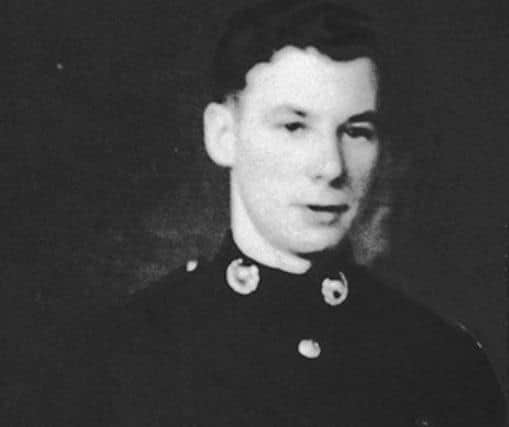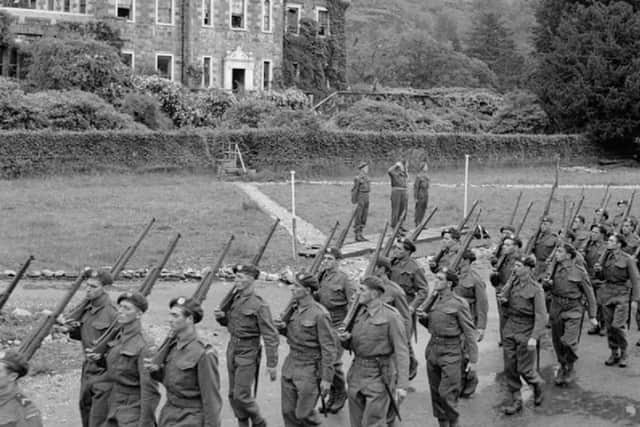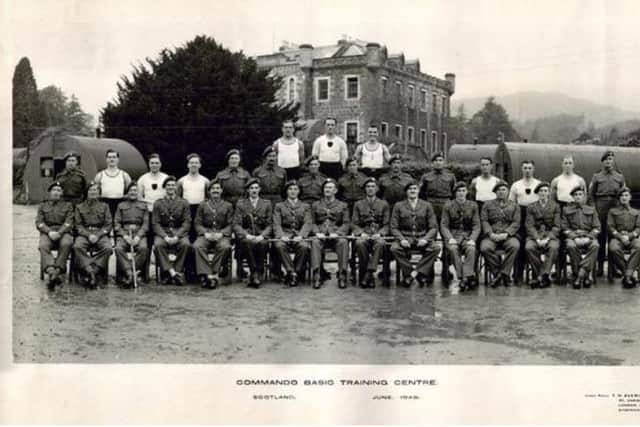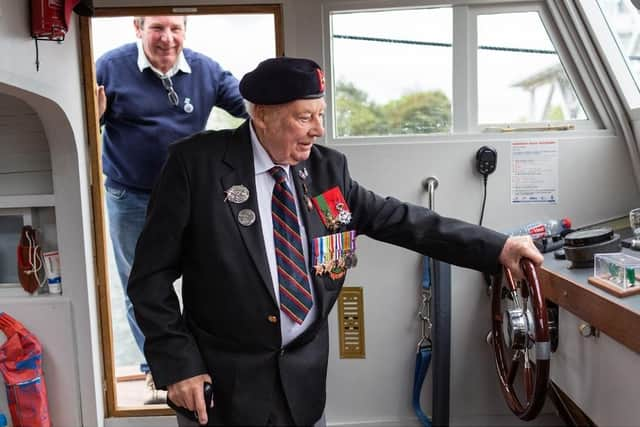Big send off planned for Mablethorpe D-Day hero Jack Quinn


Jack Quinn was one of a number of Royal Marines Commandos who saved countless lived after his heroics on D-Day as a frogman who attached explosive charges to underwater obstacles to create safe passageways for assault landing craft.
Born in Sheffield in September 1924, Jack left school at the age of 13 to take up a job offer as apprentice plumber.
Advertisement
Hide AdAdvertisement
Hide AdHe was 15 when the War began, and joined the Home Guard a few months later, carrying out duties as a runner.On February 16, 1942 Jack joined the Royal Marines with the ambition of becoming a bugler or a drummer, and following Prime Minister Winston Churchill’s call for commandos and amphibious marines, Jack joined the small boat training program at Lympstone, Exmouth.


He then moved to Dartmouth College, training as coxswain, spending days and nights on exercises at sea.
Jack was then sent to Scotland to Achnacarry Castle, known as “Castle Commando” for the “toughening up” phase.In an article written for D-Day Revisited, Jack recalled: “We were at Achnacarry for a month. The castle building itself was a sort of HQ but the whole estate was littered with Nissen type huts for accommodating the troops. The training was certainly tough, the days were long and the weather was bloody awful.
“One of the big exercises was an opposed landing which I think was on Loch Lochy. This was typically carried out at night, involving a massed assault on the beachhead approaching the castle. With all the noise of explosions and gunfire, this lined us all up very well for Normandy.”
Advertisement
Hide AdAdvertisement
Hide AdIn 1944, Jack reported to Glasgow to join the crew of a small feeder vessel which had landing craft strapped to its sides. Jack’s boat was Assault Landing Craft, LCA 789. This voyage was down to the Channel coast to commence training for D-Day.


Jack’s Captain told him he was to train with nine frogmen in the area of Poole Harbour, practicing beach assaults and underwater detonations.
The crew later met the Prime Minister and King George to explain the job they were expected to do, and the Captain warned him ‘Don’t b***s this up!’
On the day of the invasion, Jack and the other Commandos set off from Portsmouth and took position off Gold Beach, with the vital job of swimming down under cover of darkness and attaching explosive charges to the main obstacles and creating safe passageways for assault landing craft, with Jack as coxswain of the landing craft.
Advertisement
Hide AdAdvertisement
Hide AdThe Royal Marine Commandos cleared 2,400 formidable obstacles during D-Day, most of these with mines attached.


Jack recalled: “After the landings had begun, the German defenders were firing at everybody. We could see the infantrymen as they were landing and they were running forward, getting shot at, treading on mines and being blown into the air. It was chaotic; those lads on the beaches had it very rough indeed.”
Around 11.30pm that night, Jack noticed a boat on fire and although the Captain told him to leave it, and they were under heavy fire, he headed over to it because it was drifting towards a minefield and rescued the seven French men, seconds before their boat touched a mine and exploded.
Jack remained in the beaches area for the next few months, putting the new Mulberry Harbour units into position and clearing defences to make the beachhead safer.
Advertisement
Hide AdAdvertisement
Hide AdIn November 1944 Jack was awarded a formal Mention in Despatches for ‘Distinguished Service’ and the Croix de Guerre (Silver Star) by the French Government for his heroic actions on D-Day.
As the fighting moved further away and new ports opened, Jack returned to England.
At this time, the Channel Islands were the only part of the British Isles to be occupied by the Germans and after the fall of France in 1940, many islanders were evacuated to the British mainland.
After the D-Day invasion, this left the population, along with the occupying garrison of Germans, in difficulty to obtain essential supplies from France and islanders were faced with starvation.
Advertisement
Hide AdAdvertisement
Hide AdFollowing protracted negotiations with the Red Cross, in December 1944 the SS Vega was permitted to bring relief of food, soap, salt, and medical supplies. Even though the Vega made five more trips to the islands, shortages of food remained.
On May 9 1945, German forces surrendered the Island of Guernsey in a ceremony which took place on board the destroyer, HMS Bulldog, and the same day, HMS Beagle took the German surrender of the Island of Jersey.
Sark was liberated the following day and the German garrison of Alderney surrendered on May 20.
Jack recalled anchoring at St Peter Port harbour in Guernsey under the command of a Major – whose surname was Major, and could see Germans in uniform the harbour entrance throwing their rifles into a pile.
Advertisement
Hide AdAdvertisement
Hide AdThe crew began distributing loaves of bread and that when the people of Guernsey realised that they were being liberated, the streets were filled with people celebrating – and this liberation festival is still celebrated on Guernsey to this day.
Jack continued to visit Normandy every June for many years with a group of 40 or so veterans with D-Day Revisited, a charity which funds and organises pilgrimages for veterans to revisit the beaches and surrounding areas where they fought for their country, and pay tribute to the friends they lost there.
He described these visits as a “terrific experience, with unforgettable memories”, and also visited ‘Castle Commando’ Achnacarry in September 2021 and was moved to pay his respects to the “Three Men”.
Jack remained in the Royal Marines until 1957, when he went into the Reserve, and then worked in road haulage for about twenty years then started a transport business with his son Michael - staying involved in the company until the age of 82.
Advertisement
Hide AdAdvertisement
Hide Ad"Thinking of family life along with a busy and rewarding career, as veterans we can’t help thinking about those who didn’t make it through the war; all the lost potential from those wonderful young men who were lost in France and the Low Countries,” Jack added to D-Day Revisted.
He also received one of France's highest military honours, the Legion D'Honneur, in 2016, and was also given the Freedom of the Parish by the Mayor of Mablethorpe and Sutton in 2019, which his son Michael said he was delighted about as it meant he could drive his sheep around the town!
Jack will be given a grand send-off at his funeral tomorrow (Friday) as befitting his incredible life and heroics in the war, and you can come along and pay your respects.
People will be able to gather at Mablethorpe War Memorial on the High Street tomorrow to join in the one-minute silence at noon, and line the streets as the funeral procession passes.
Jack’s funeral will then take place at Alford Crematorium at 12.30pm.